Embark on a journey through time to the Taj Mahal, an edifice that eloquently narrates a tale of immortal love and the zenith of an architectural era. Standing majestically on the banks of the Yamuna River, this mausoleum is a crowning jewel of Mughal architecture, reflecting the culmination of India's rich artistic legacy. Through this blog, we extend an invitation to explore the splendor of this UNESCO World Heritage Site, delving deeply into its architectural brilliance and the masterful craftsmanship that defines its enduring allure.

Enhanced Architectural Grandeur
Witness the Taj Mahal as it emerges from the mists of dawn, a colossal structure of white marble that commands the sky. The minarets, standing as sentinels of history, and the iconic dome, a celestial beacon, come alive with the first light. This architectural marvel plays with the sun's palette, changing from the tender blush of dawn to the fiery amber of dusk, offering a visual testament to the ingenuity of its Mughal creators. It is a structure not just built but composed, each stone and curve a note in an epic symphony of beauty and grandeur.The craftsmanship of the Taj Mahal is an enduring testament to the exquisite artistry of the Mughals.
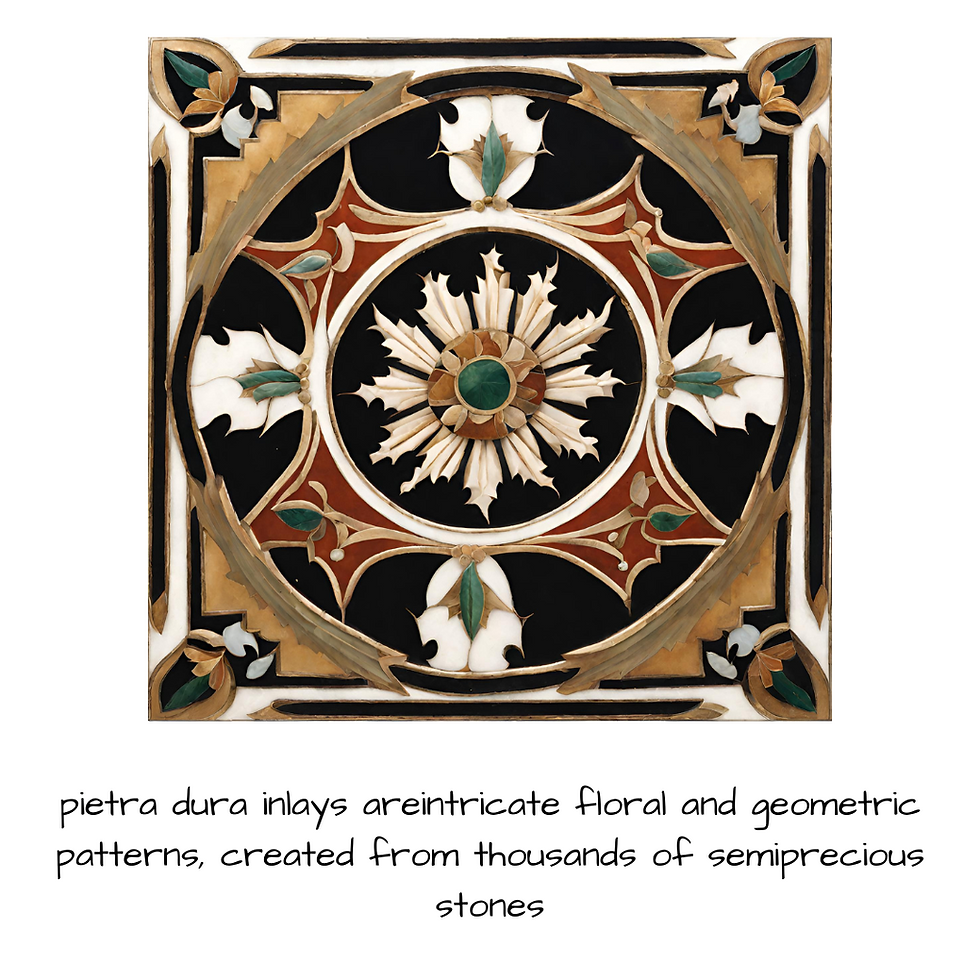
The pietra dura inlays, composed of thousands of semiprecious stones, create not just patterns but narratives on the walls. Such intricacy without the aid of modern tools underscores the remarkable skills of the artisans.

The cultural tapestry of the Taj Mahal is rich and complex, weaving Persian, Islamic, and Indian motifs into a seamless fabric. This fusion is evident in the detailed calligraphy, geometric patterns, and floral motifs that adorn its surface.
Every image of the Taj Mahal offers a unique perspective on its timeless beauty, capturing the interplay of light and shadow, the reflection on the Yamuna River, and the delicate details of its design.

It's a marvel that such precision and symmetry were achieved centuries ago, sparking wonder about the ingenuity of its creators.
To truly appreciate the mastery behind the Taj Mahal, one must consider the historical context of its creation—a time when each calculation was made by hand, and each design was a product of human ingenuity, unaided by the technologies we now rely on.
Design Intricacies from an Architectural Perspective
In the realm of Mughal architecture, the Taj Mahal stands as a paragon, a masterclass in design that reveals the genius of its architects. Let's delve into the technical details that distinguish its composition:
In the architectural tapestry of the Taj Mahal, the soaring minarets rise approximately 40 meters, their outward tilt a testament to the Mughal era's foresight in engineering, serving both aesthetic grandeur and practical resilience.
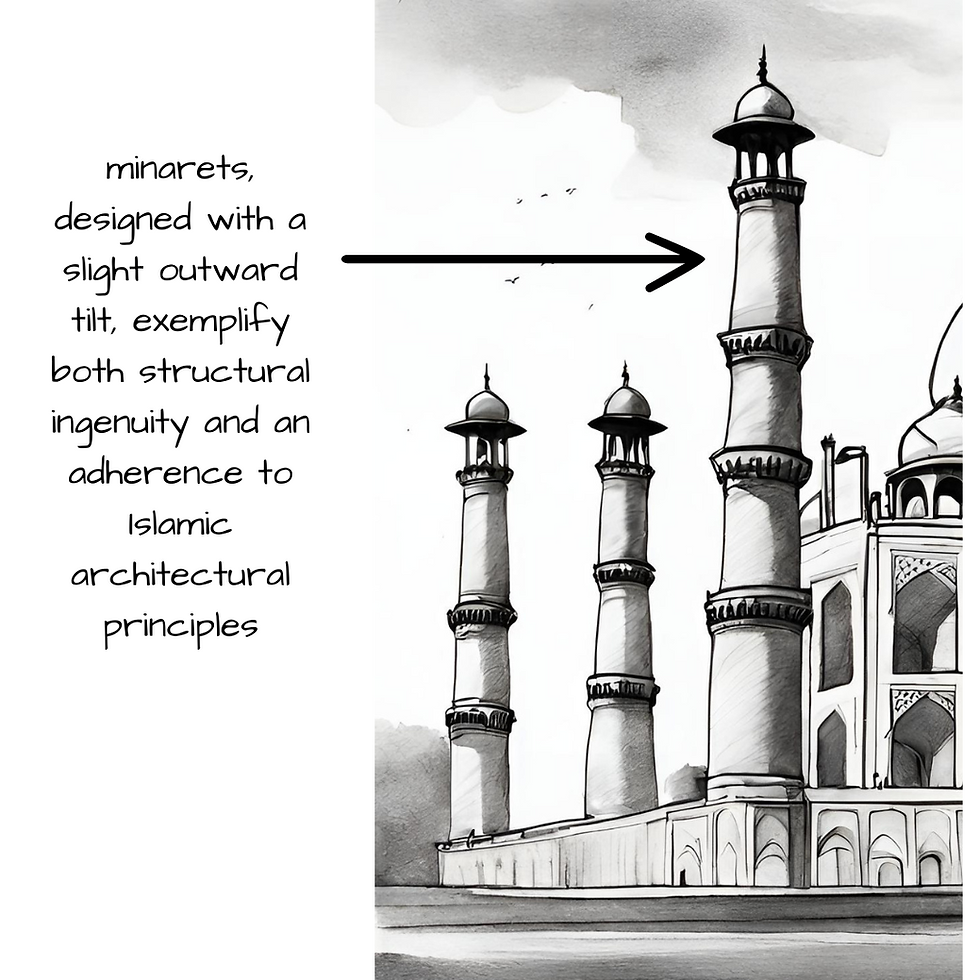
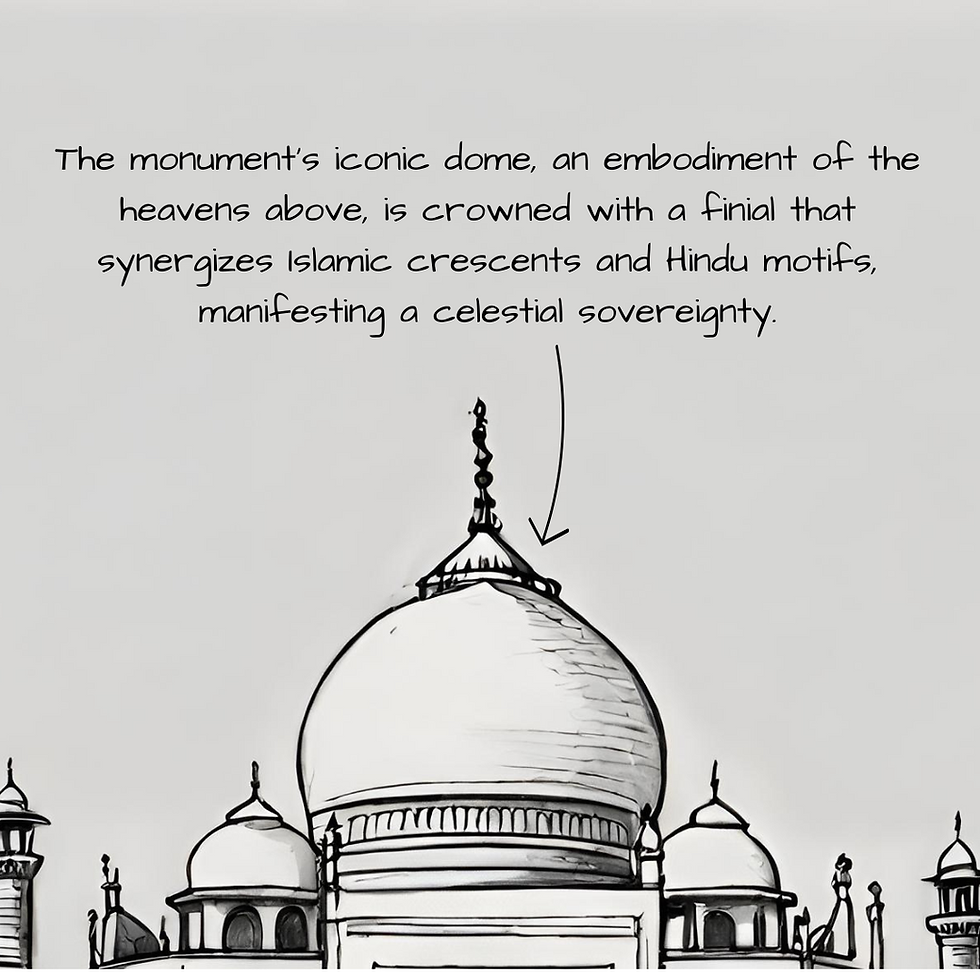
The symphony of design continues with the majestic onion dome, an emblematic feature of the Mughal skyline that reaches skywards, a visual representation of the ascent to the divine, crowned with a finial that melds Islamic and Hindu motifs, symbolizing a celestial dominion.
The lotus decorations that grace the base of the dome pay homage to indigenous traditions, signifying purity and spirituality. These are complemented by the chattris, which punctuate the structure’s profile, adding a rhythm to the curvature of the dome and enhancing its towering presence. The ornamental guldastas not only serve as aesthetic flourishes but also cleverly conceal functional aspects of the building's design, such as water chutes.


Framing the entrance, the pishtaq arches create a profound sense of depth and grandeur, leading the eye to the sublime calligraphy that adorns them.
The script, set in black marble, is ingeniously scaled, so that even from afar, the letters maintain visual proportion, an ingenious play on perception crafted by artisans of a bygone era.
This confluence of elements within the Taj Mahal's design encapsulates both symbolic depth and architectural ingenuity, each facet a thread in the rich fabric of its design narrative, revealing the meticulousness and innovation that shaped this enduring marvel.The grand entrance of the Taj Mahal is not merely a passageway but a complex canvas of Mughal craftsmanship, adorned with intricate lattice stonework and inlay that

prelude the architectural opulence ahead.
Inside, the mausoleum's layout is a geometric marvel, with its central chamber octagonal to permit an unobstructed view of the sarcophagi from each entrance, mirroring the cardinal points and reinforcing the cosmic significance that Mughals placed on symmetry and directional alignment.

The gardens of the Taj, with their precise quadrilateral design, are a representation of the four gardens of paradise, featuring lush foliage and reflective pools that align with the mausoleum's aesthetic narrative, creating a serene environment that blends architectural magnificence with the natural beauty. These elements, together with the astronomical alignments, not only showcase a mastery of landscaping but also embody the Mughal penchant for creating celestial connections through earthbound edifices. The Taj Mahal, in every aspect of its design, serves as an enduring testament to an era where architecture was a confluence of art, science, and spirituality.
Historical and Structural facts
The Taj Mahal, an epitome of Mughal architectural magnificence, subtly plays with perception, crafting optical illusions that make minarets appear symmetrical from afar, despite their outward tilt.
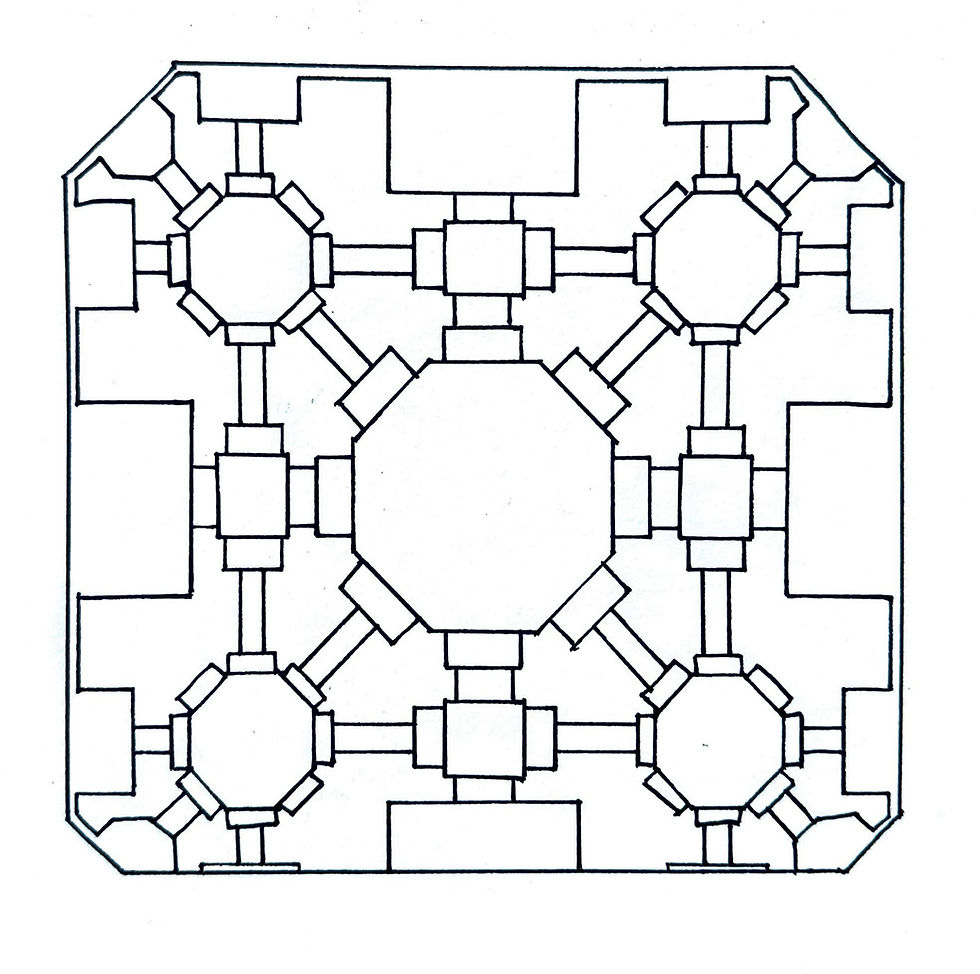
This illusion extends to the cenotaphs within; the sarcophagi of Mumtaz Mahal and Shah Jahan are mere representations, as the true sepulchers lie in a quiet chamber below, symbolizing humility before the divine.

Shah Jahan's personal involvement in the design process underscored his desire for perfection and power, evident in the complex's symmetrical harmony, which was designed to reflect the paradisiacal house envisioned for his beloved Mumtaz Mahal. The use of about 20,000 different types of stones, sourced from across Asia, manifests the emperor's grand vision.
Yet, for all its symmetry, the Taj Mahal harbors a deliberate imperfection: Shah Jahan's cenotaph is unexpectedly offset, a poetic acceptance that human endeavors, however grand, are imperfect compared to the divine.

This architectural wonder continuously shifts in hues, resonating with the changing light of day, a reminder of life's transient beauty.
The Taj Mahal, thus, stands not only as a monumental tribute to love but also as a masterpiece of architectural philosophy and the zenith of Mughal creativity.
Taj Mahal's Secrets, History and Facts
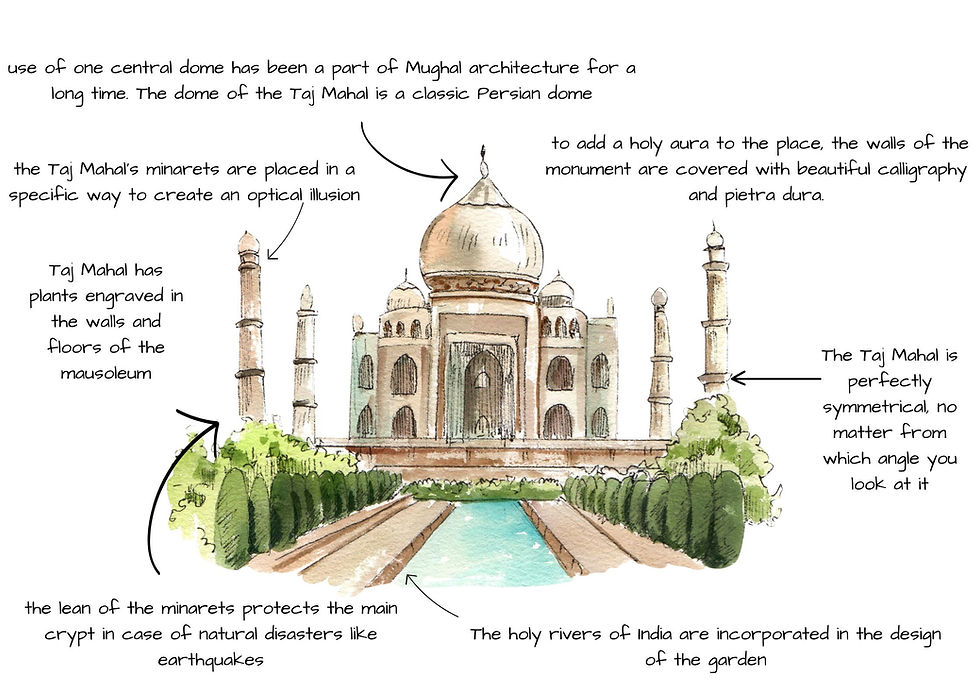
As we traverse the architectural narrative of the Taj Mahal, we uncover a meticulously structured complex, strategically divided into five distinct sections. This partitioning includes the main mausoleum, mosques, guest houses, and the encompassing gardens, drawing inspiration from the Islamic concept of paradise.

The central dome, an astounding 40 meters in height and 4 meters thick, is an engineering marvel that seems to defy gravity, creating the illusion of floating above the mausoleum's facade.
The minarets, standing at the corners of the base, are constructed with a slight outward slant, a foresight to protect the mausoleum in case of collapse—an architectural safeguard that blends seamlessly with aesthetic beauty.
The Shahjahani columns, uniform across the complex, contribute to the Taj's cohesive design language, a hallmark of Shah Jahan's era. The construction, a colossal task, engaged around 20,000 workers and artisans for over two decades, weaving a tapestry of human endeavor and artistic legacy that has stood the test of time.

This historical masterpiece, therefore, is not just a mausoleum but a testament to the zenith of Mughal architecture, encapsulating both the grand scale of construction and the intricate finesse of craftsmanship. It's a narrative etched in stone, reflecting the pinnacle of human artistic expression.As we draw the curtains on our exploration of the Taj Mahal, we're left with a deep appreciation for its architectural splendor and the enigmatic mastery of its creators. This monument transcends time, resonating with the legacy of love and the zenith of human craftsmanship.

We invite you, our readers and fellow admirers of history and architecture, to not only ponder upon the marvels of the Taj but to engage with us. Share your insights, ask your lingering questions, and let us know what other architectural wonders stir your curiosity. Your journey with Archversity need not end here; it is, in fact, just beginning.
Join our community, engage in the dialogue, and together let's continue to unravel the mysteries and masterpieces of our world. Comment below, follow us for more such narratives, and become a part of the conversation that connects the past with the passionate architects of the future.
.png)
תגובות